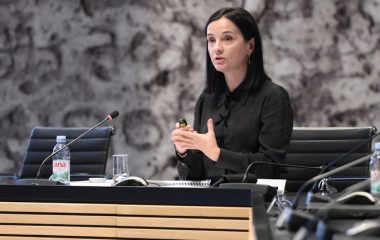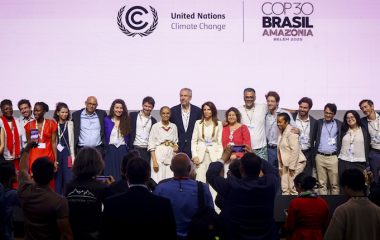
Photo: Stevan Aksentijevic from Pixabay
The Low Carbon Development Strategy of the Republic of Serbia for the period from 2023 to 2030 with projections until 2050 estimates that the most expensive scenario for the country is to ignore the costs related to climate change. Such an outcome could bring additional costs for the energy system of EUR 108 billion between 2020 and 2050.
The Government of Serbia has adopted the Strategy of the Low Carbon Development of the Republic of Serbia for the 2023-2030 period with projections until 2050 more than three years after the public debate. The document reveals that the action plan for its implementation in the 2024-2030 period should be adopted within one year.
The strategy sets as a general goal the reduction of greenhouse gas emissions excluding land use, land-use change and forestry (LULUCF) by 13% by 2030 and 55% to 69% by 2050 from the level registered in 2010. The targeted decrease is 20%, and 59% to 72%, respectively, from 2005, or 33% and 65% to 76% from 1990.
The goals are envisaged to be met mostly by cutting emissions in the production of electricity and heat, increasing energy efficiency and using renewable energy sources in the industrial sector.
The risks from climate change for Serbia’s sustainable development are obvious
The risks from climate change for Serbia’s sustainable development are obvious, the strategy reads.
According to the document, the effects of climate change are already threatening, while future risks could affect infrastructure, agricultural production, water availability and public health.
The dependence on fossil fuels can threaten Serbia’s economic competitiveness in the medium and long term, the strategy reads.
In addition, Serbia’s obligations under the Law on the Ratification of the Paris Agreement and the United Nations Framework Convention on Climate Change (UNFCCC) require, in the long term, a significant shift of the economy towards a low-carbon and climate-adaptive economy.
The strategy’s vision is that by 2050 Serbia will be a low-carbon society with a competitive and resource-efficient economy that provides citizens with green jobs and quality life in a climate-resistant society.
Six scenarios were examined
Six scenarios were analyzed for the purposes of the strategy: business as usual scenarios – B1 and B2, which do not envisage additional measures, and four mitigation scenarios, M1 to M4.
The modeling shows that the most expensive scenario for Serbia is to ignore the costs related to climate change when making strategic decisions, and continue the creation of emissions as assumed in the basic B2 scenario.
In this case, the total additional costs for the energy sector are estimated at EUR 108 billion over the 2020-2050 period, while the costs of the European Union’s Emissions Trading System (EU ETS) are taken into account from the estimated year of its full implementation – 2030.
The costs in the doing nothing scenario are likely to be even higher if the CO2 border tax is taken into account
The strategy’s authors stressed that the estimated costs of doing nothing don’t take into account the CO2 border tax (Carbon Border Adjustment Mechanism – CBAM), which is expected to be introduced after 2026 for exports of iron and steel, cement, aluminum, fertilizers, hydrogen and electricity to the EU.
It is likely to raise the costs even further, the study concluded.
The strategy proposes to apply the M2 scenario until 2030. It leaves a range of possible mitigation solutions in scenarios M2 and M4 for the following two decades.
The M2 scenario is based on fully transposed and implemented EU regulations. It can secure a 33.3% emission reduction from 1990 and a share of renewable energy of 32.3%.
Additional investments seen at EUR 44 billion to EUR 83 billion
The measures proposed in the strategy require additional investments in various sectors, unlike the B2 scenario. They are estimated at EUR 6.5 billion for the period 2020-2030 and EUR 37.8 to EUR 76.8 billion for 2030 to 2050.
Additional investments will be shared between consumers-households (for the purchase of more efficient cars and home appliances or insulation of apartments), investors-companies (in the form of new trucks, renewable energy sources), and the government (for the modernization of the public transport fleet and afforestation on state land).
Consumers and investors will bear the majority of investments and costs – 63% and 33%, respectively, until 2030, and 68% and 26% in the period 2030-2050, according to the strategy.









Be the first one to comment on this article.